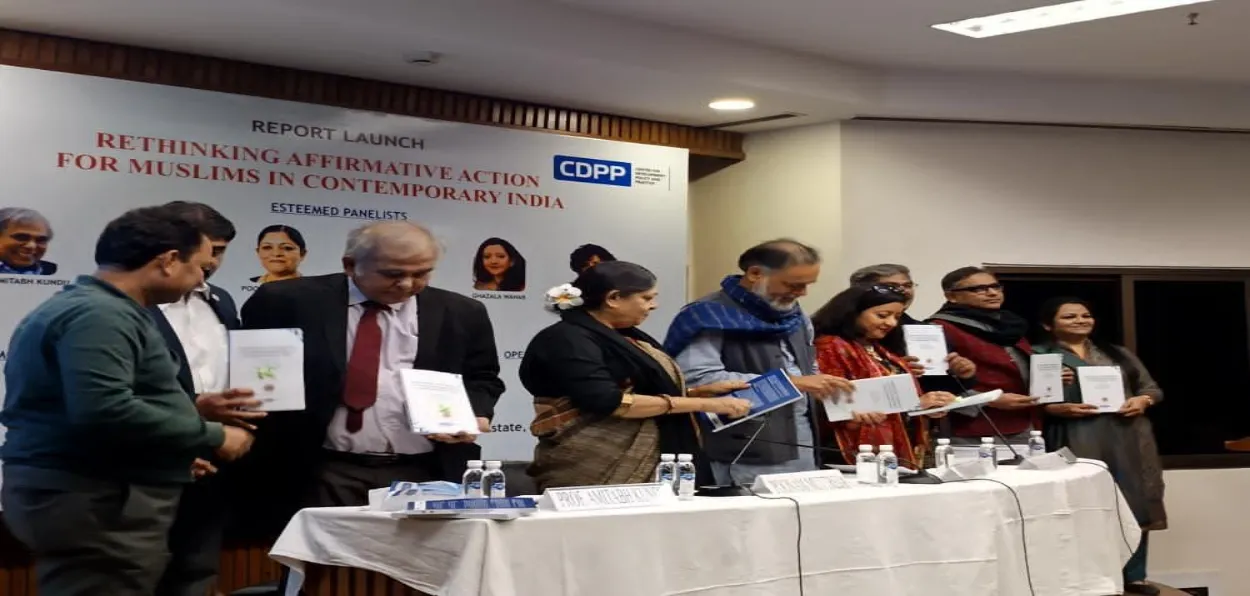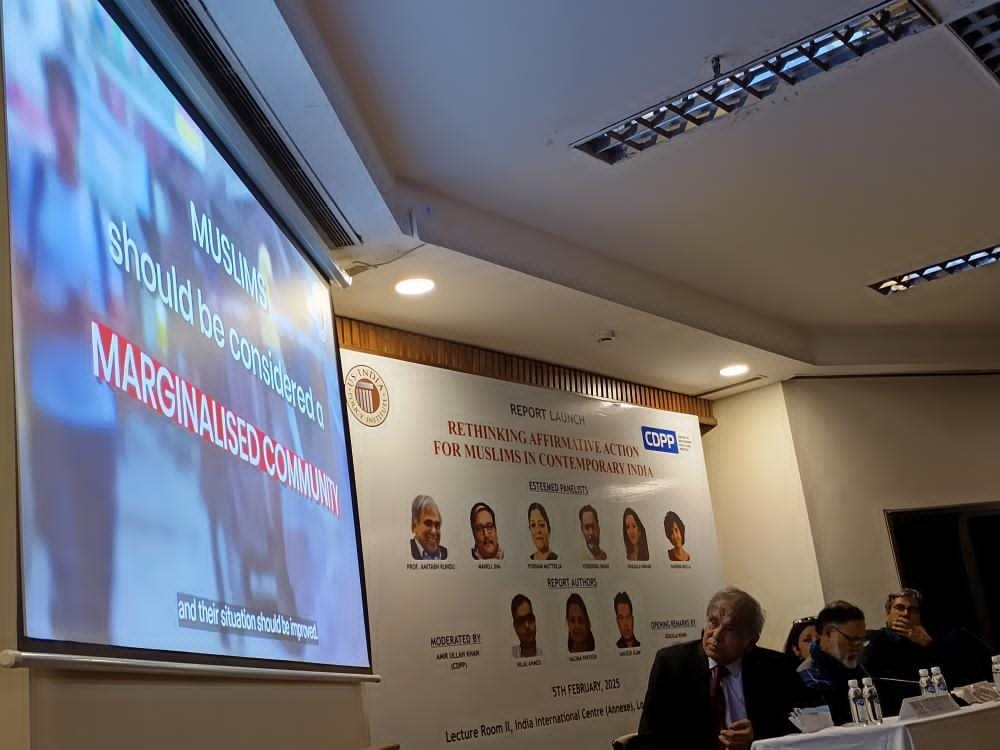
Tarique Anwar/New Delhi
“Education among Muslims and their enrolment is low for both men and women, but the gap is not very high of compared with other communities.” The assertion was made by noted academic Professor Amitabh Kundu, who chaired the 2013 committee evaluating the implementation of the Sachar Committee’s recommendations at the release of a report -Affirmative Action for Muslims in Contemporary India.
Critically analysing the marginalisation and social inclusion of Muslims, the report sheds light on the challenges the community faces in the country’s changing political and economic environment.
The focus of the debate was a misconception that Muslims prevent women from pursuing education.
Armed with data, Kundu challenged this narrative head-on. The numbers showed a picture that explained that while Muslim enrolment levels in education are indeed lower than in other communities; the gender gap is quite close to the others.
He said the difference in enrolment rates between Muslim men and women stood at 5.32%, only slightly higher than 4.99% among Hindus.
Kundu pointed out a table, highlighting the gender disparity in enrolment. The figures were as follows: for Hindus, the difference between never enrolled females and males was 5.83%, for Muslims it was 4.97% and for Christians, it stood at 0.85%. As for current attendance, the male-female gap was 4.99% for Hindus, 5.32% for Muslims and 1.29% for Christians.
These findings provided a counter-narrative to the pervasive stereotype that Muslim women are systematically excluded from education. Kundu’s data suggested that the problem lay not in religious or gendered opposition to education, but rather in broader socio-economic conditions.
 Prof Amitabh Kundu and others looking at the screen on which the report is being discussed
Prof Amitabh Kundu and others looking at the screen on which the report is being discussed
Nazima Parveen, an associate research fellow at the Policy Perspective Foundation, emphasized the need for a secular framework to understand the marginalization of Muslim communities and suggested that such an approach could be critical for better integrating them into the existing affirmative action policies.
The report, a collaboration between Hilal Ahmed, assistant professor at the Centre for the Study of Developing Societies, and Mohammad Sanjeer Alam, associate professor at the same institute, paints a stark picture of the socio-economic challenges faced by Muslims. The study critiques the lack of access to opportunities and the gap in educational and employment outcomes when compared to other social groups.
Poonam Muttreja, executive director of the Population Foundation of India, challenged the prevailing myth regarding the Muslim population’s growth. “Muslim population, at best, will rise to 18% in the next century. It is declining at the fastest rate,” she said.
She argued that the media, particularly Hindi television channels, distorted the reality for their viewers, and perpetuated “false” narratives that fuelled misconceptions about the Muslim community.
Meanwhile, Ghazala Wahab, a senior journalist and author, pointed out a critical gap in the way Muslim experiences were treated in discussions on policy and statistics. “Figures and reports often reflect educational and employment data, they rarely address the live reality of Muslims in India,” she said.
“The lived experience of a Muslim does not depend on statistics; it also does not depend upon what the government is doing as our streets are so unsafe,” Wahab said, highlighting the disconnect between policy-driven statistics and the realities of daily life for Muslims in India.
Nazima Parveen suggested that the report’s findings pointed to the need for more targeted developmental policies. These policies, she argued, could help address the specific challenges faced by Muslims in economically backward regions. By focusing on industries where Muslims are disproportionately represented, such as small-scale enterprises, the government could provide both capital and training.
The panelists argued for a more nuanced approach to addressing the challenges faced by Muslims in India. They said while statistics provide a necessary overview, they often fail to capture the depth of “exclusion and insecurity” that members of this community experience daily. For real progress to be made, they said, there must be a shift in policy — one that considers not only the numbers but also the personal experiences and barriers faced by Muslims in both urban and rural settings.
ALSO READ: Is Trump's Gaza Riviera plan aimed at usurping strip’s oil deposits
The discourse on Muslim marginalization and affirmative action, they agreed, must move beyond surface-level statistics to a more comprehensive understanding of the systemic issues that shape the lives of millions.
